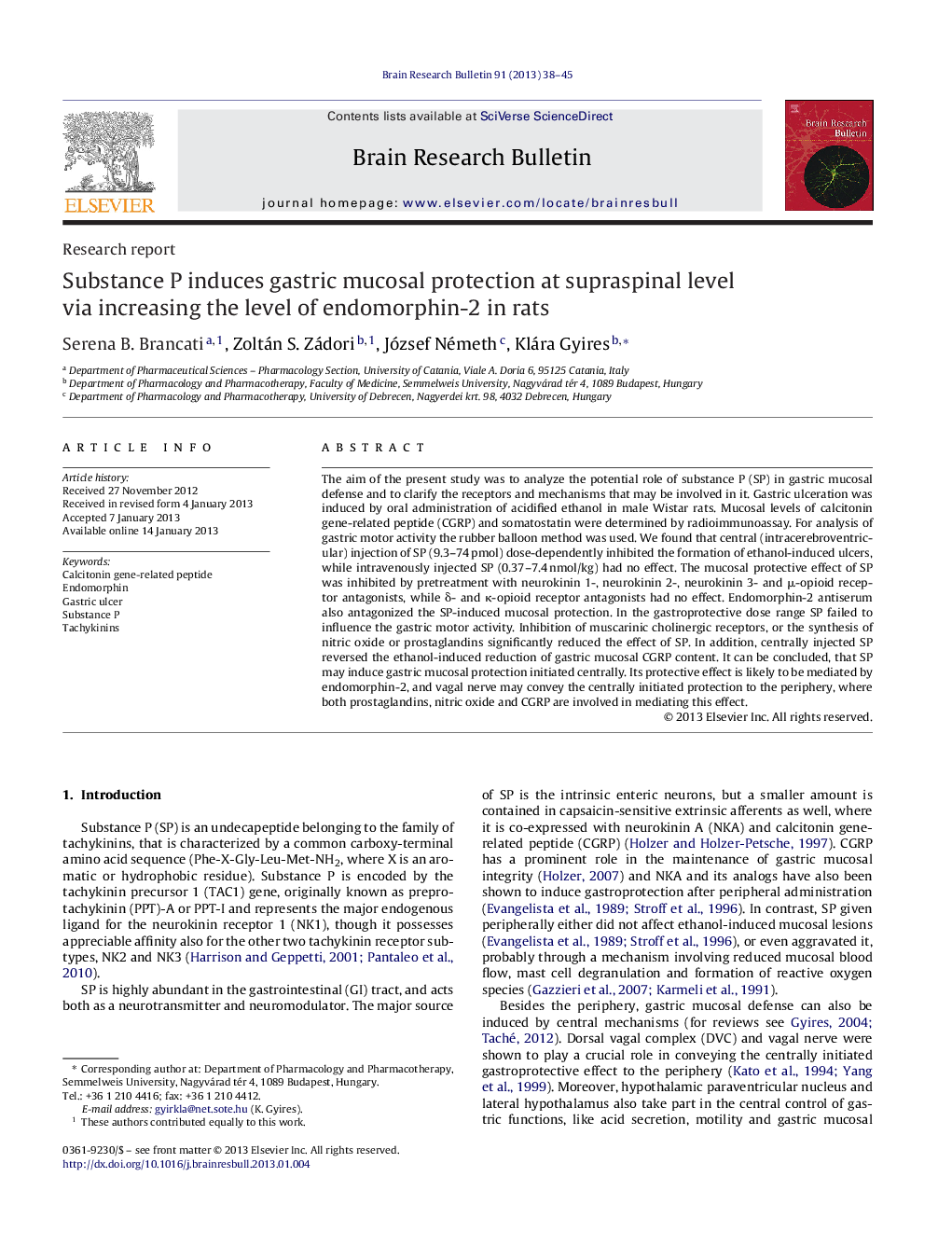| Article ID | Journal | Published Year | Pages | File Type |
|---|---|---|---|---|
| 4318917 | Brain Research Bulletin | 2013 | 8 Pages |
The aim of the present study was to analyze the potential role of substance P (SP) in gastric mucosal defense and to clarify the receptors and mechanisms that may be involved in it. Gastric ulceration was induced by oral administration of acidified ethanol in male Wistar rats. Mucosal levels of calcitonin gene-related peptide (CGRP) and somatostatin were determined by radioimmunoassay. For analysis of gastric motor activity the rubber balloon method was used. We found that central (intracerebroventricular) injection of SP (9.3–74 pmol) dose-dependently inhibited the formation of ethanol-induced ulcers, while intravenously injected SP (0.37–7.4 nmol/kg) had no effect. The mucosal protective effect of SP was inhibited by pretreatment with neurokinin 1-, neurokinin 2-, neurokinin 3- and μ-opioid receptor antagonists, while δ- and κ-opioid receptor antagonists had no effect. Endomorphin-2 antiserum also antagonized the SP-induced mucosal protection. In the gastroprotective dose range SP failed to influence the gastric motor activity. Inhibition of muscarinic cholinergic receptors, or the synthesis of nitric oxide or prostaglandins significantly reduced the effect of SP. In addition, centrally injected SP reversed the ethanol-induced reduction of gastric mucosal CGRP content. It can be concluded, that SP may induce gastric mucosal protection initiated centrally. Its protective effect is likely to be mediated by endomorphin-2, and vagal nerve may convey the centrally initiated protection to the periphery, where both prostaglandins, nitric oxide and CGRP are involved in mediating this effect.
► Substance P via acting on central NK1–3 receptors induces gastroprotection. ► Endomorphin-2 is likely to play a role in the SP-induced gastroprotective effect. ► The centrally induced effect is mediated by the vagal nerve to the periphery. ► In the periphery prostaglandins, nitric oxide and CGRP mediate the effect. ► Alterations in gastric motor activity do not contribute to the gastroprotection.
